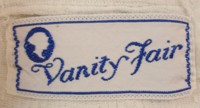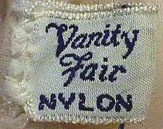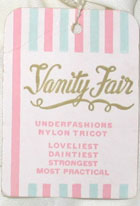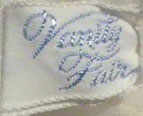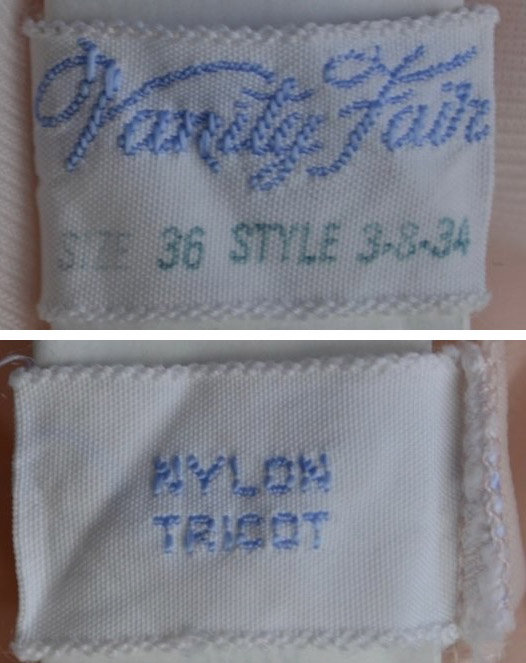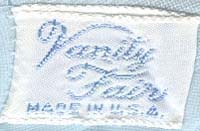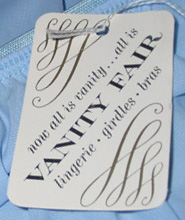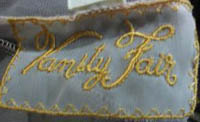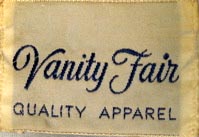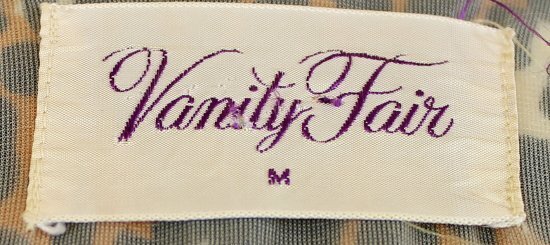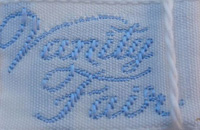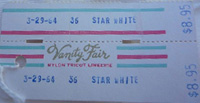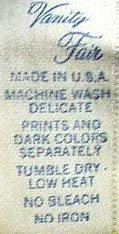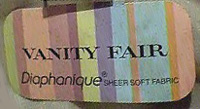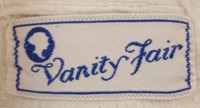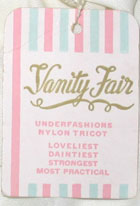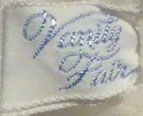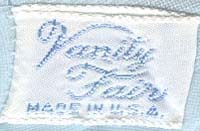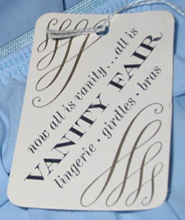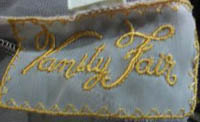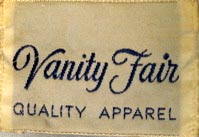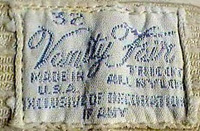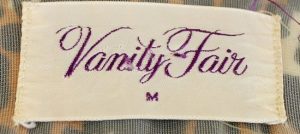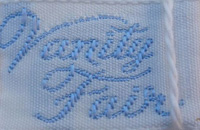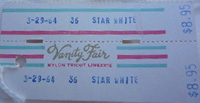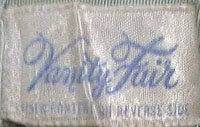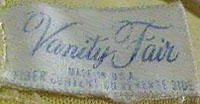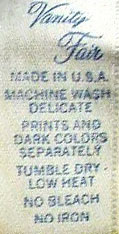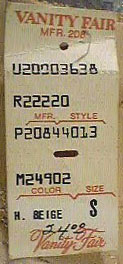The roots of Vanity Fair go back to 1899, when eight Reading, Pennsylvania businessmen formed the Reading Glove and Mitten Manufacturing Company. By 1910 the company was in deep trouble, so in 1911 the company was shut down and one of the partners, John Barbey, bought the equipment from the others. The name of the company was changed to the Schuylkill Silk Mills in 1913 and the next year they added silk underwear to the company’s line of gloves.
During this period of time, the women’s underwear industry was changing rapidly. Women’s styles were changing and more simple undergarments were required. In 1917 Barbey had a contest to get a new name for the company. From all the entries, the name “Vanity Fair” was chosen. The company then began an extensive advertising campaign designed to show that the new, simpler undergarments could be pretty as well as functional.
In 1919 the company again changed its name, this time to Vanity Fair Silk Mills. They also made plans to expand their lingerie production and to cut back on producing gloves. The following year they stopped making gloves altogether, but continued to manufacture the glove silk cloth, using it for their lingerie. During the 1920s Vanity Fair began to make lingerie from rayon and rayon/silk blends, due to the rising price of raw silk. And in 1929 they began making hosiery.
In the early 1930s a way was found to make yarn with a rubber core. This new yarn — elastic — was soon used by Vanity Fair in the making of foundation garments such as girdles and bras.
Like many lingerie companies, Vanity Fair spent the WWII years making parachutes. After the war was over they turned increasingly to the use of nylon and in 1948 announced that they would be using nylon exclusively for their products. 1948 was also the year in which the owners closed the Reading mill, due to efforts to unionize the mill. The 475 workers were left jobless and the machinery was shipped to another Vanity Fair mill in Alabama.
Vanity Fair’s decision to use only nylon allowed them to work on the development of the new fabric. In 1949 they found a way to permanently pleat nylon. During the 1950s they introduced new colors and even prints. In 1953 the long term bestselling leopard print was introduced and it was soon followed by other prints, including a zebra stripe and a butterfly print.
In the late 1960s Vanity Fair began to expand by buying other companies. They changed their corporate name to VF Corporation. Among the acquisitions were Berkshire hosiery, Lee Jeans, and Kay Windsor. Over the next decades, the company bought Wrangler, Jantzen, and Vassarette. Ironically, today the VF Corporation is no longer in the lingerie business, having sold Vanity Fair to Fruit of the Loom early in 2007.
Written by fuzzylizzie
See vintage Vanity Fair from VFG members on Etsy (paid link)
